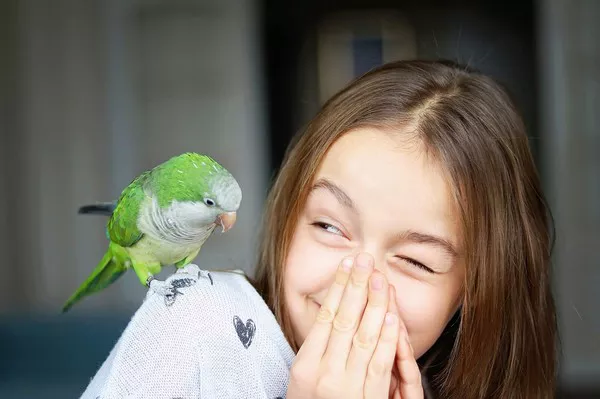The Pocket American Bully, a compact and powerful breed, has gained popularity among dog enthusiasts in recent years. But what is a Pocket American Bully, and what makes this breed unique? In this comprehensive article, we’ll explore the characteristics, care requirements, and dietary needs of these charming canines, providing you with valuable insights into this fascinating breed.
Introduction of Pocket Bully
1. What is a Pocket American Bully?
The Pocket American Bully, often referred to as the “Pocket Bully,” is a small yet robust dog breed known for its muscular build and affectionate nature. They are a derivative of the American Pit Bull Terrier and American Staffordshire Terrier, selectively bred to produce a compact and muscular appearance.
2. Physical Characteristics
Pocket Bullies have a striking appearance, with a stocky frame, broad chest, and well-defined muscles. Their head is often blocky, and their ears can be cropped or left natural. They come in a variety of colors and patterns, making each one unique in its own right.
3. Temperament
These dogs are loyal, gentle, and affectionate by nature, making them excellent companions for families and individuals alike. They are known for their friendly disposition, which can sometimes be misleading given their intimidating appearance.
4. Size
One distinguishing feature of the Pocket Bully is their size. These dogs are typically smaller than other American Bully varieties, with a height ranging from 13 to 17 inches at the shoulder.
5. Exercise Needs
Pocket Bullies are moderately active and require regular exercise to maintain their muscle tone and overall health. Daily walks and playtime are essential to keep them happy and content.
History of the Pocket Bully
1. Origins
The Pocket Bully breed emerged in the United States, primarily for the purpose of creating a more compact and manageable version of the American Bully. Breeders aimed to maintain the breed’s distinctive appearance while reducing its size, making it more suitable for urban living.
2. Selective Breeding
The breeding process involved careful selection of parent dogs to emphasize desirable traits, such as a blocky head, muscular build, and friendly temperament. Through years of dedicated breeding, the Pocket Bully was born.
Feeding & Diet
1. What is a Pocket American Bully’s Dietary Needs?
Proper nutrition is crucial for the health and well-being of your Pocket Bully. These dogs require a balanced diet rich in essential nutrients to support their muscular frame and overall health. It’s important to consult with your veterinarian to determine the most appropriate diet for your specific dog, as individual needs may vary.
2. High-Quality Dog Food
Opt for high-quality dog food that is formulated to meet the nutritional needs of small to medium-sized breeds. Look for options that list meat as the primary ingredient and avoid foods with excessive fillers or artificial additives.
3. Portion Control
To maintain a healthy weight and prevent obesity, portion control is essential. Follow the feeding guidelines provided on the dog food packaging, and be mindful of any changes in your dog’s activity level, which may require adjustments to their food intake.
4. Fresh Water
Ensure your Pocket Bully has access to clean, fresh water at all times. Proper hydration is essential for digestion and overall health.
Care
1. Grooming
Pocket Bullies have short, sleek coats that are relatively low-maintenance. Regular brushing will help keep their coat healthy and reduce shedding. Additionally, occasional baths and nail trimming are necessary to keep your dog clean and comfortable.
2. Training
Proper training is essential for Pocket Bullies, just as it is for any dog breed. They are intelligent and eager to please, making them relatively easy to train. Consistent and positive reinforcement-based training methods are highly effective in shaping their behavior.
3. Socialization
Early socialization is crucial for Pocket Bullies to ensure they are well-adjusted and comfortable around people and other animals. Expose them to various situations, environments, and individuals to build their confidence and prevent behavioral issues.
4. Health Care
Regular veterinary check-ups are essential to monitor your Pocket Bully’s health. They are generally healthy dogs, but like all breeds, they may be prone to certain health issues. Routine vaccinations, flea and tick prevention, and dental care should be part of their health care regimen.
5. Exercise and Mental Stimulation
Pocket Bullies benefit from both physical and mental exercise. Provide them with opportunities to play, run, and engage in activities that challenge their intellect. Puzzle toys and interactive games can keep their minds sharp.
Conclusion
In conclusion, the Pocket American Bully is a remarkable breed with a unique combination of strength, loyalty, and affection. Understanding what a Pocket Bully is and its characteristics is the first step in providing them with the love and care they deserve. By meeting their dietary needs, ensuring proper grooming and training, and addressing their overall health, you can enjoy a fulfilling and rewarding relationship with your Pocket Bully. These wonderful dogs are not only visually impressive but also make fantastic companions for those who appreciate their special qualities.
Related Topics:
How much to feed American bulldog puppy?
What are American bullies bred for?
American bulldog are they aggressive?


























